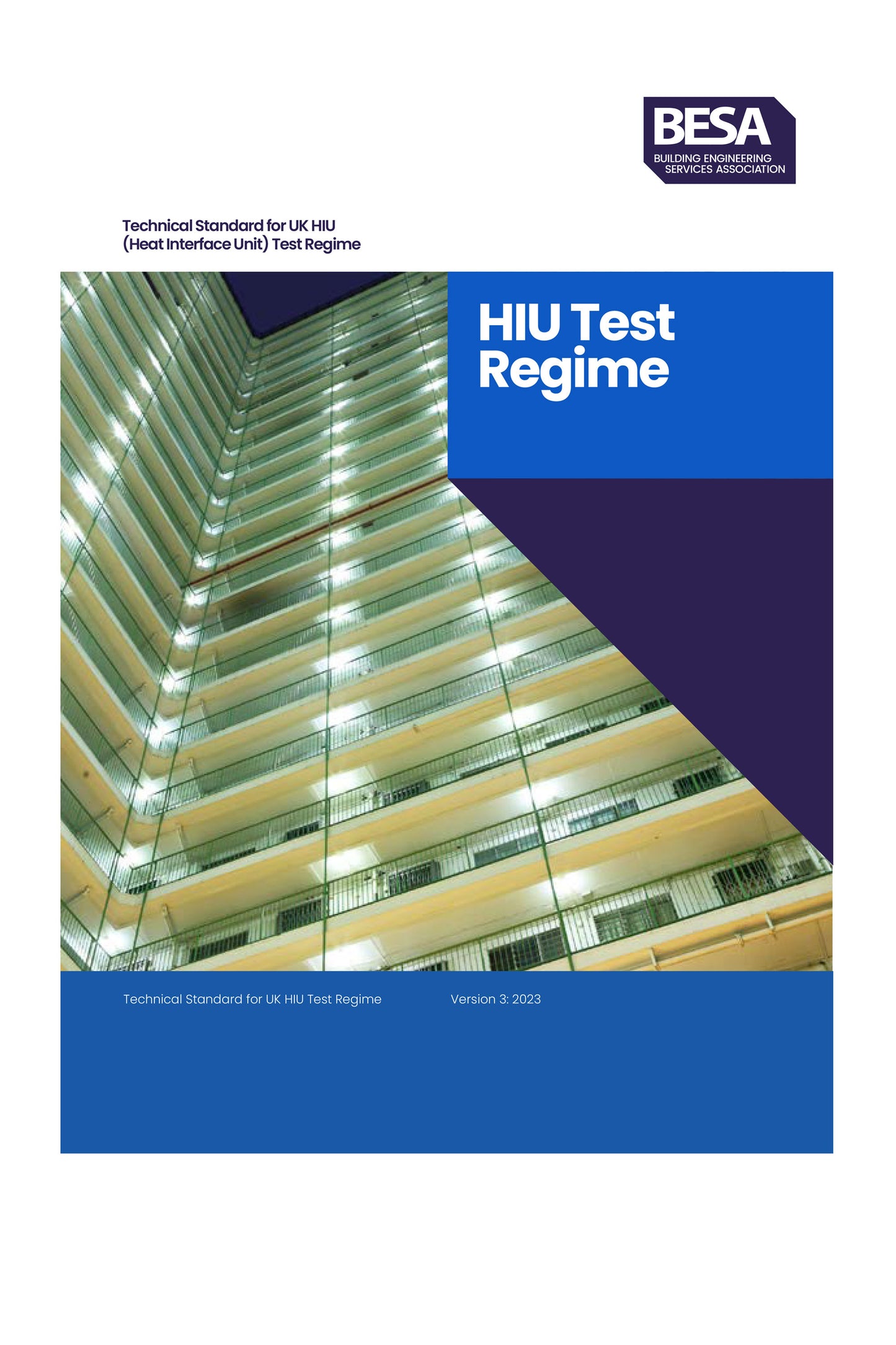-
TTT

Technical Standard For UK HIU Test Regime
Technical Standard For UK HIU Test Regime
Non-members: £0.00
BESA Contractor: £0.00
Couldn't load pickup availability

Setting the Performance Standard for Heat Interface Units (HIUs)
With over 50,000 Heat Interface Units installed annually in the UK, establishing clear performance standards is essential to improving the efficiency of heat networks and supporting the UK’s net zero strategy. This third edition of the BESA Test Standard introduces a modular testing framework that reflects the latest advancements in technology, operating practices, and low-carbon network development.
Developed with the backing of the Department for Energy Security and Net Zero (DESNZ) and shaped by a cross-sector industry steering group, the UK HIU Test Standard provides impartial, detailed performance assessments. It enables designers, specifiers, operators, and developers to make informed, consistent decisions for both new-build and existing residential heat networks.
Key Updates In Version 3 Include:
- A modular test structure for streamlined updates and broader HIU type coverage
- New test variants for Non-Keep Warm and space heating-only units
- Revised VWART (Volume Weighted Average Return Temperature) calculation methodology
- Introduction of minimum performance thresholds and Best Practice recognition
- Enhanced alignment with regulatory and industry frameworks including CIBSE/ADE CP1 (2020)
The HIU Test Standard has already had a measurable impact in reducing carbon emissions, improving heat network service quality, and driving innovation through consumer-led market transformation.
Also available to download are the individual BESA HIU Test Modules from 1 to 10.

